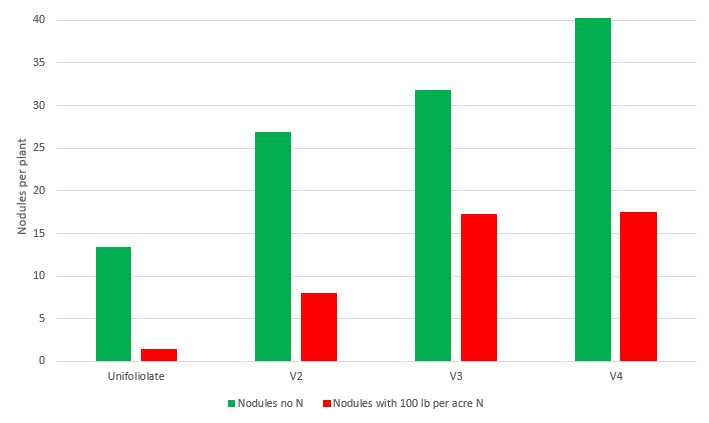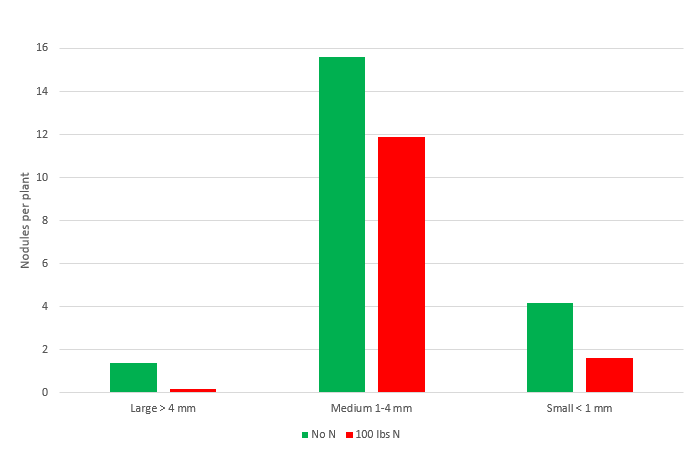Nitrogen and Soybean Nodulation
This page was adapted from the article, "Nitrogen and Soybean Nodulation," which appeared in Crop & Pest Report on July 7, 2022.
Soybean is a legume and plant roots are able to form a symbiotic relationship with specific bacteria (Bradyrhizobium japonicum) to fix atmospheric nitrogen (N) and transform it into an available form for plant growth. Soybean grown in North Dakota and northwest Minnesota normally do not require N fertilizer because of this relationship with beneficial bacteria. The N-fixing bacteria colonize host roots and form nodules (small swellings) on the root system (Figure 1). The formation of nodules and N fixation can start as early as the V2 (two trifoliolate leaves) growth stage and it peaks at the reproductive stages. Nodules that are actively fixing N should have a pink to red color on the inside.
High N content in the soil reduces the ability of the bacteria to form nodules and fix N (Figure 2). The number of nodules per root will increase as the plant develops, but at all growth stages the number of nodules will be lower when N fertilizer was applied. In addition, the size of the nodules will be smaller with the application of N (Figure 3). However, instead of developing many nodules, the soybean plant will take up the required N for plant development from the available N in previously fertilized fields. The soybean yield will be similar or marginally higher than fields not fertilized with N.


